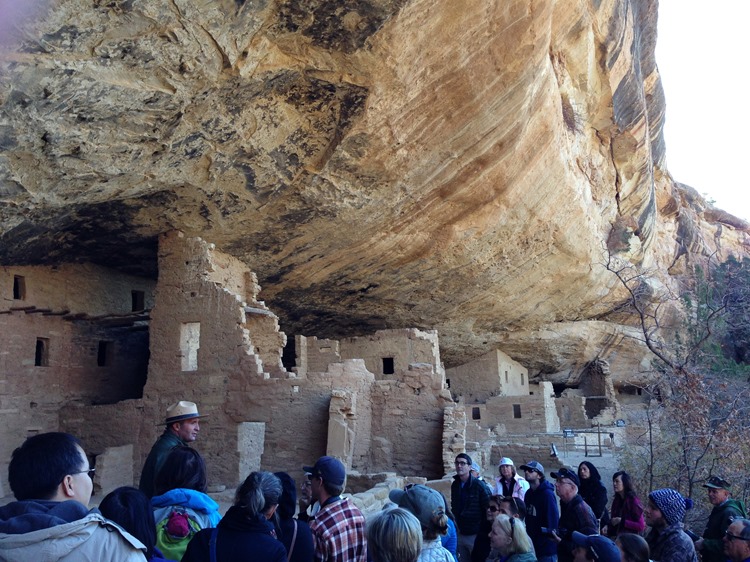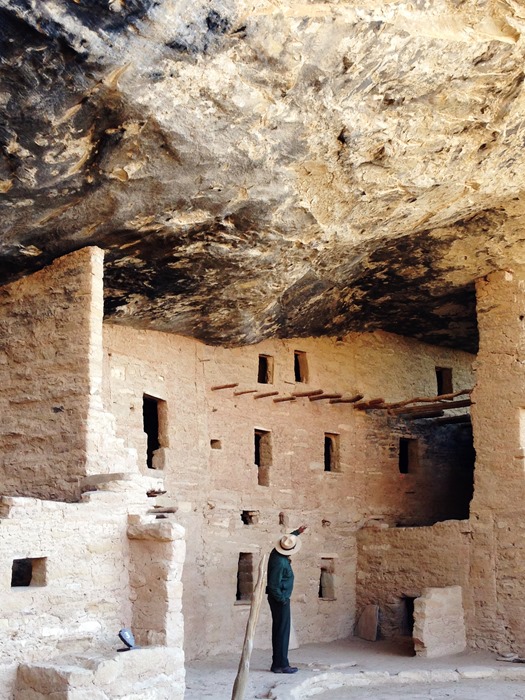I LOVED the southwest.
It was both the beginning of our amazing roadtrip adventure and a quintessential part of it. Images of deserts, canyons, and red rocks were the foundation for our initial roadtrip daydreams, and we didn’t let go of them. It was the landscape that was most foreign to me and one of the most uniquely beautiful and interesting because of it.
Following the fulfillment of all my cowboy aspirations in Monument Valley, we sliced up through the Four Corners (postcard coming soon!) and into colorful Colorado.
Hold on, I feel a tangent coming on. Why are the state line “Welcome to Colorful Colorado” signs completely brown? Is it supposed to imply that the state is so colorful that it speaks for itself? Because the Colorado state signs were by far the most boring of any we saw. Tsk tsk.
Luckily the place itself far surpasses the expectations set by the sad little signs. I hadn’t been to Colorado since I was a toddler (and I don’t remember that trip at all), but I instantly felt at home. I loved every state we visited for different reasons, but Colorado was the first one that made me think, “I could actually stay here.”
We didn’t get far that first evening, but stopped just inside the southwest corner in the little town of Cortez. This was our first introduction to the weather shift between the desert and the mountains, as it got down into the 20s that night (that’s rough in a house and even worse in a van). Luckily, this was the day that we gained an addition to our little vagabond family in the form of the warmest, softest blanket I have ever experienced. Go to your nearest Walmart right now and just look for a blanket with a pattern of pinecones. Unfortunately I can’t be any more specific than that except to ensure you that it’s heavenly.
Having made it through the night quite comfortably thanks to our fluffy bundle of joy, we started the next morning at my favorite coffee shop of the trip: the Silver Bean.
There was a lot of personality and top notch java stuffed inside that battered old Airstream! The two baristas were hustling like crazy and churning out lattes as though they had way more than 20 square feet of space to work with.
With coffee and breakfast in hand, we hopped back into Kokapelli and set off for Mesa Verde, our destination for the morning.
Mesa Verde National Park is just a short drive outside of Cortez in Montezuma County. The area was inhabited by the Ancient Pueblo (Anasazi) peoples from roughly 600-1300 AD. Unlike many of the more nomadic Native American cultures, they stayed in this area for centuries and built extensive cliff dwellings which have been incredibly well preserved.
The road to the park led us on a winding path up through the hills. You don’t get a sense of it from these photos, but there were a few switchbacks as we spiraled up and around that reminded me forcefully of that old Mickey Mouse cartoon where he hitches up his trailer and takes a disastrous mountain drive with Goofy and Donald (this one <— go watch it!). This was the first time I really related to that cartoon on our roadtrip, but it certainly wouldn’t be the last.
See the Rockies way off on the horizon there? I loved having mountains like that back within view. And take a gander at that skyyyy…
We made it to the Chapin Mesa Archaeological Museum and met up with the first guided tour group of the day. Usually, Mesa Verde has a whole bunch of amazing sites to explore; however, our timing gave us limited options. There was a winter stormfront set to move through in the next few days so temperatures had plummeted, and there is currently extensive preservation work being carried out on Cliff Palace, the largest and most well-known cliff dwelling, so that’s temporarily closed to visitors.
On the bright side, we had fewer agonizing decisions to make about cutting things out to stick to a schedule, and were able to take advantage of everything Mesa Verde had to offer that day! We joined a walking tour of Spruce Tree House, the third largest village in the park. See it peeking out from under the cliff tabletop there?
Now, guys. Let’s talk about tour guides. You know I love ‘em. I most recently waxed poetic about Broderick in Antelope Canyon, as well as his dynamic predecessors, Billy and Ernest of Edinburgh. So let me now introduce you to the latest and greatest (well, it’s at least a tie) in our cast of tour guide characters: Terrapin.
You’ll direct your attention to his footing, if you please. He chose to give the tour introduction while basically hanging on to the steep rockface by his toes.
Terrapin was one of the most genuine souls I have ever encountered. Not only did he fill us in on the fascinating history of Spruce Tree House and the ancient tribes who lived there, but he also told us about his own lifelong aspiration to become a park ranger at Mesa Verde, the time he’d spent as a young boy with his father and brothers in the area, and his own children’s growing interest in the park. It was amazing to be shown around by someone who was so strongly and personally connected to the area; this relatively small, 80-square-mile park in Colorado was clearly his place more than anywhere else in the world. I loved that.
We made our way down the steep hillside path and right up to Spruce Tree House, which is actually comprised of about 130 rooms throughout the long village dwelling.
Terrapin described the discovery and subsequent archeological and anthropological study of the cliff dwellings, explaining that researchers have been able to discern details such as the number of families that lived in each dwelling and which rooms were used for cooking, sleeping, etc. Even hundreds of years later, the carbon from cooking fires is easily visible on the underside of the cliff.
Here’s a fun fact about me: I love superlatives. I think my friend Erika was the first one to actually point this out, when she asked me during our New Zealand roadtrip why I was so keen on stopping at the steepest street in the world, the only castle in the southern hemisphere, and the southernmost Starbucks in the world. There’s just something exciting about places that are truly one of a kind!
Anyway, Mesa Verde has a lot going for it in this department. Aside from being a beautiful national park and an UNESCO World Heritage Site, it’s the largest archeological preserve in the United States and contains the largest cliff dwelling in all of North America (Cliff Palace).
My favorite Mesa Verde superlative, though, is that it is the ONLY cultural park in the United States National Park System – meaning it’s the only one preserving historic man-made structures instead of purely natural landscapes.
I found the architecture of the dwellings so impressive. The walls looked almost like they’d been pre-built and then wedged perfectly under the cliff face, although they were constructed in place brick by brick. The Anasazi originally built their dwellings on the flat, grassy tops of the mesas, but eventually moved down as their populations grew and they recognized the protection that the rock overhang could offer.
One of the coolest features of Spruce Tree House that we were able to experience was visiting a kiva, one of the circular underground rooms that were used for religious ceremonies. We descended the ladder through the tiny hole and into the dark kiva (certain replacements/reinforcements have been made for safety reasons, but the location and general structure are still original) and got a glimpse into one of the most important rituals in the lives of the original inhabitants of Mesa Verde.
Ascending the ladder from the dark kiva after a ceremony represented the Ancient Pueblo peoples’ legend of their ancestors emerging from the previous world into the current one. It was pretty special to be able to follow in such meaningful footsteps!
I tried to soak up every word that Terrapin said (including when he proudly announced that he has never owned a cell phone), but I’m sure I lost out on a few things as I wandered around the cliff dwellings peeking through windows and doorways.
After giving one of the best tours in living memory, Terrapin made his only fatal mistake by telling our group that the surrounding area was actually full of tarantulas. BYE.
Amity and I hightailed it back up the pathway, made a quick second pass through the museum to get our National Park Passport stamps, and carried on.
After all, the mountains were calling!
The Details: $10 entry fee per vehicle | Open year-round with occasional weather closures | Website HERE


















